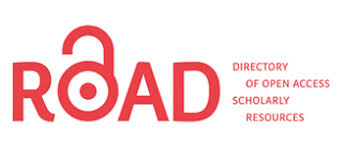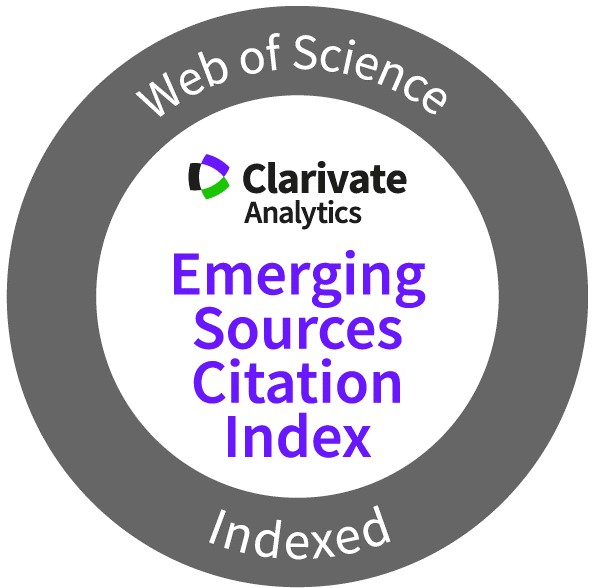¿Se puede implementar la activación conductual para la depresión en la adolescencia ? Una revisión sistemática de la literatura
Palabras clave:
Depresión, Activación Conductual, AdolescenciaResumen
La depresión en adolescentes es un problema de salud mental que va en aumento. La prevalencia de este trastorno oscila entre el 4 y 5%. Se encuentra asociada a niveles altos de recaída y recurrencia a lo largo de la vida. La Activación Conductual (AC) es un programa que ha demostrado en numerosos estudios su eficacia para esta psicopatología. Se realizó la búsqueda de artículos originales publicados entre el año 2007 y 2019 en idioma español e inglés en bases de datos electrónicas DOAJ, Wiley Online Library y Google Scholar. Inicialmente se obtuvieron 258. 652 artículos. De la búsqueda realzada se identificaron 19 artículos que fueron tenidos en cuenta para su análisis, se eliminaron 258.625 por contenido no relacionado completamente al tema de estudio. De los estudios revisados, se observó la heterogeneidad en la adaptación de los programas existiendo varios protocolos de AC adaptados a población adolescente con Trastorno Depresivo Mayor, pero con pocos estudios empíricos que refuercen la eficacia del tratamiento. Sin embargo, se evidencia que los resultados obtenidos en la aplicación de los protocolos son beneficiosos y logran la disminución e incluso la remisión sintomática.
Citas
APA. (2013). Diagnostic and statistical manual of mental disorders (5th ed.). Psychiatric Publishing.
*Chu, B., Colognori, D., Weissman, A., & Bannon, K. (2009). An Initial Description and Pilot of Group Behavioral Activation Therapy for Anxious and Depressed Youth. Cogntivie and Behavioral Practice, 16, 408 - 419.
Clayborne, Z., Varin, M., & Colman, I. (2019). Systematic Review and Meta-Analysis: Adolescent Depression and Long-Term Psychosocial Outcomes. Journal of the American Academy of Child & Adolescent Psychiatry, 58(1), 72 - 79.
Cuijpers, P., Van Straten, A., & Warmerdam, L. (2007). Behavioral activation treatments of depression: A meta-analysis. Clinical Psychology Review, 27(3), 318 - 326.
*Davidson, T., Yuen, E., Felton, J., McCauley, E., Gros, K., & Ruggiero, K. (2014). Feasibility assessment of a brief web - based behavioral activation intervention for adolescents with depressed mood. Int. Journal Psychiatry in Medicine, 48, 69 - 82.
Gaynor, S., & Harris, A. (2008). Single - Participant Assessment of Treatment Mediators. Strategies Description and Examples From a Behavioral Activation Intervention for Depressed Adolescents. Behavior modification, 32(3), 372 - 402.
Genise, G. (2019). Activación Conductual para la Depresión adolescente: Un abordaje basado en la evidencia. Psyciencia. Retrieved 14 de enero from https://www.psyciencia.com/activacion-conductual-en-la-depresion-adolescente-un-abordaje-basado-en-la-evidencia/
Genise, G., Crocamo, L., & Genise, N. (2019). Manual de psicoterapia y pacopatología infantojuvenil. Akadia.
Gonzálevez, M., Espada, J. & Orgilés, M. (2019). El estado actual de la psicoterapia de niños y adolescentes. In G. Genise, L. Crocamo, y N. Genise (Eds.), Manual de psicoterapia y psicopatología infantojuvenil. Akadia.
*Gudmundsen, G., McCauley, E. & Dimidjian, S. (2016). The Adolescent Behavioral Activation Program: Adapting Behavioral Activation as a Treatment for Depression in Adolescence. Journal of Clinical Child and Adolescent Psychology, 45, 291 - 304.
Kanter, J., Busch, A., & Rusch, L. (2009). Behavioral Activation: Distinctive Features. Routledge.
*Jacob, M., Keely, M., Ritschel, L., & Craighead, E. (2011). Behavioural activation for the treatment of low‐income, African American adolescents with major depressive disorder: a case series. Clinical Psychology & Psychotherapy, 20.
Kanter, J., Puspitasari, A., Santos, M., & Nagy, G. (2012). Behavioral Activation: history, evidence and promise. The British Journal of Psychiatry, 200, 361 - 363. https://doi.org/10.1192/bjp.bp.111.103390
Lejuez, C., Hopko, D., LePage, J., Hopko, S., & McNeil, D. (2001). A brief behavioral activation treatment for depression. Cognitive and Behavioral Practice, 8, 164 - 175.
Mazzucchelli, T., Kane, R., & C., R. (2009). Behavioral Activation Treatments for Depression in Adults: a meta-analysis and review. Clin Psychol Sci Pract, 16, 383 - 411.
McCauley, E., Schloredt, K., Gudmundsen, G., Martell, C., & Dimidjian, S. (2015). The adolescent behavioral activation program: adapting behavioral activation as a treatment for depression in adolescence. Journal of Cllinical child and adolescent psychology. https://doi.org/http://dx.doi.org//10.1080/15374416.2014.979933
McCauley, E., Schloredt, K., Gudmundsen, G., Martell, C., & Dimidjian, S. (2016). Behavioral Activation with Adolescents. A Clinician´s Guide. The Guilford Press.
*Mori, A., Okamoto, H., Okada, G., Takagaki, K., Jinnin, R., Takagaki, K., Kobayakawa, M., & Yamamura, T. (2016). Behavioral activation can normalize neural hypoactivation in subthreshold depression during a monetary incentive delay task. Journal of Affective Disorders, 189(1), 254 - 262.
Nardi, B., Francesconi, G., Catena - Dellósso, M., & Bellantuono, C. (2013). Adolescent depression: Clinical features and therapeutic strategies. Eur Rev Med Pharmacol Sci, 17(11), 1546 - 1551.
Olfson, M., Benjamin, G., Druss, S., & Marcus, S. (2015). Trends in Mental Health care among children and adolescents. The new england journal of medicine, 2029 - 2038.
*Pass, L., Brisco, G., & Reynolds, S. (2015). Adapting brief behavioral activation (BA) for adolescent depression: a case example. The Cognitive Behaviour Therapist, 8(17), 1 - 13.
*Pass, L., Hodgson, E., Whitney, H., & Reynolds, S. (2018). Brief Behavioral Activation Treatment for Depressed Adolescents Delivered by Nonspecialist Clinicians: A Case Illustration. Cognitive and Behavioral Practice, 25(2), 208 - 224.
*Pass, L., Lejuez, C., & Reynolds, S. (2018). Brief Behavioural Activation (Brief BA) for Adolescent Depression: A Pilot Study. Behavioural and Cognitive Psychotherapy, 46(2), 182 - 194.
*Pass, L., Whitney, H., & Reynolds, S. (2016). Brief behavioural activation for adolescent depression: working with complexity and risk. Clinical Case Studies, 15, 360 - 375.
*Pasyar, M., Bakhshayesh, A. R. & Saeedmanssh, M. (2018). Training of behavioral activation therapy tailored to teens and its effect on depression in adolescents.
*Reynolds, S., MacPherson, L., Baruch, D., Tull, M., & Lejuez, C. (2011). Integration of the Brief Behavioral Activation Treatment for depression (BATD) into College Orientation Program: Depression and Alcohol Outcomes. Journal of counseling psychology, 58, 555 - 564. https://doi.org/10.1037/a0024634
Rice, F., & Warne, N. (2019). Pediatric Depression. In Neurobiology of Depression (pp. 415 - 424). Elsevier.
*Ritschel, L., Ramirez, C., Jones, M., & Craighead, E. (2011). Behavioral activation for depressed teens: a pilot study. Cognitive and Behavioral Practice, 18, 281 - 299.
*Ritschel, L., Ramirez, C., Cooley, J., & Craighead, E. (2016). Behavioral Activation for Major Depression in Adolescents: Results From a Pilot Study. Clinical Psychology: Science and Practice, 23.
*Ruggiero, K., Morris, T., Hopko, D., & Lejuez, C. (2007). Application of behavioral activation treatment for depression to an adolescent with history of child maltreatment. Clinical Case Studies, 6, 64 - 78.
Shapero, B., Chai, X., Vangel, M., Biederman, J., Hoover, C., Whitfield - Gabrieli, S., & Hirshfeld - Becker, D. (2019). Neural Markers of Depression Risk Predict the Onset of Depression. Psychiatry Research: Neuroimaging. https://doi.org/https://doi.org/10.1016/j.pscychresns.2019.01.006
*Takagaki, K., Okamoto, Y., Jinnin, R., Mori, A., Nishiyama, Y., Yamamura, T., Yokoyama, S., Shiota, S., Okamoto, H., Kawakami, N., Furukawa, T. & Yamawaki, S. (2016). Behavioral activation for late adolescents with subthreshold depression: a randomized controlled trial. Eur Child Adolesc Psychiatry, 25, 1171 - 1182. https://doi.org/10.1007/s00787-016-0842-5
*Takagaki, K., Okamoto, Y., Jinnin, R., Mori, A., Nishiyama, Y., Yamamura, T., ... & Ogata, A. (2016). Mechanisms of behavioral activation for late adolescents: Positive reinforcement mediate the relationship between activation and depressive symptoms from pre-treatment to post-treatment. Journal of affective disorders, 204, 70-73.
Thapar, A., Collishaw, S., Pine, D., & Thapar, A. (2012). Depression in adolescence. Lancet, 17(379), 1056 - 1067. https://doi.org/doi:10.1016/S0140-6736(11)60871-4.
*Tindall, L., Mikocka - Walus, A., McMillan, D., Wright, B., & Hewitt, C. (2017). Is behavioral activation effective in the treatment of depression in young people? A systematic review and meta - analysis. Psychology and Psychotherapy: Theory, Research and Practice, 90.
*Wallis, A., Roeger, L., Milan, S., Walmsley, C., & Allison, S. (2012). Behavioral Activation for the treatment of rural adolescents with depression. The Australian Journal of Rural Health, 20, 95 - 96.
Publicado
Cómo citar
Número
Sección
Los autores que publican en esta revista están de acuerdo con los siguientes términos:
- Los autores conservan los derechos de autor y garantizan a la revista el derecho de ser la primera publicación del trabajo al igual que licenciado bajo una Creative Commons Attribution License que permite a otros compartir el trabajo con un reconocimiento de la autoría del trabajo y la publicación inicial en esta revista.
- Los autores pueden establecer por separado acuerdos adicionales para la distribución no exclusiva de la versión de la obra publicada en la revista (por ejemplo, situarlo en un repositorio institucional o publicarlo en un libro), con un reconocimiento de su publicación inicial en esta revista.
- Se permite y se anima a los autores a difundir sus trabajos electrónicamente (por ejemplo, en repositorios institucionales o en su propio sitio web) antes y durante el proceso de envío, ya que puede dar lugar a intercambios productivos, así como a una citación más temprana y mayor de los trabajos publicados (Véase The Effect of Open Access) (en inglés).










